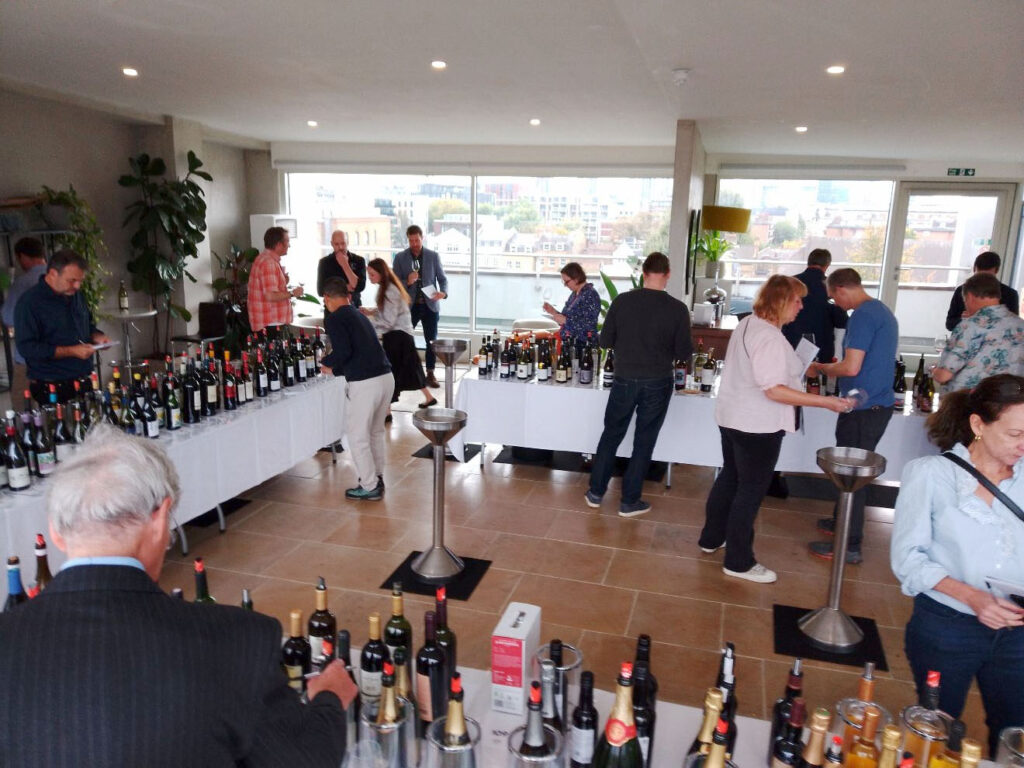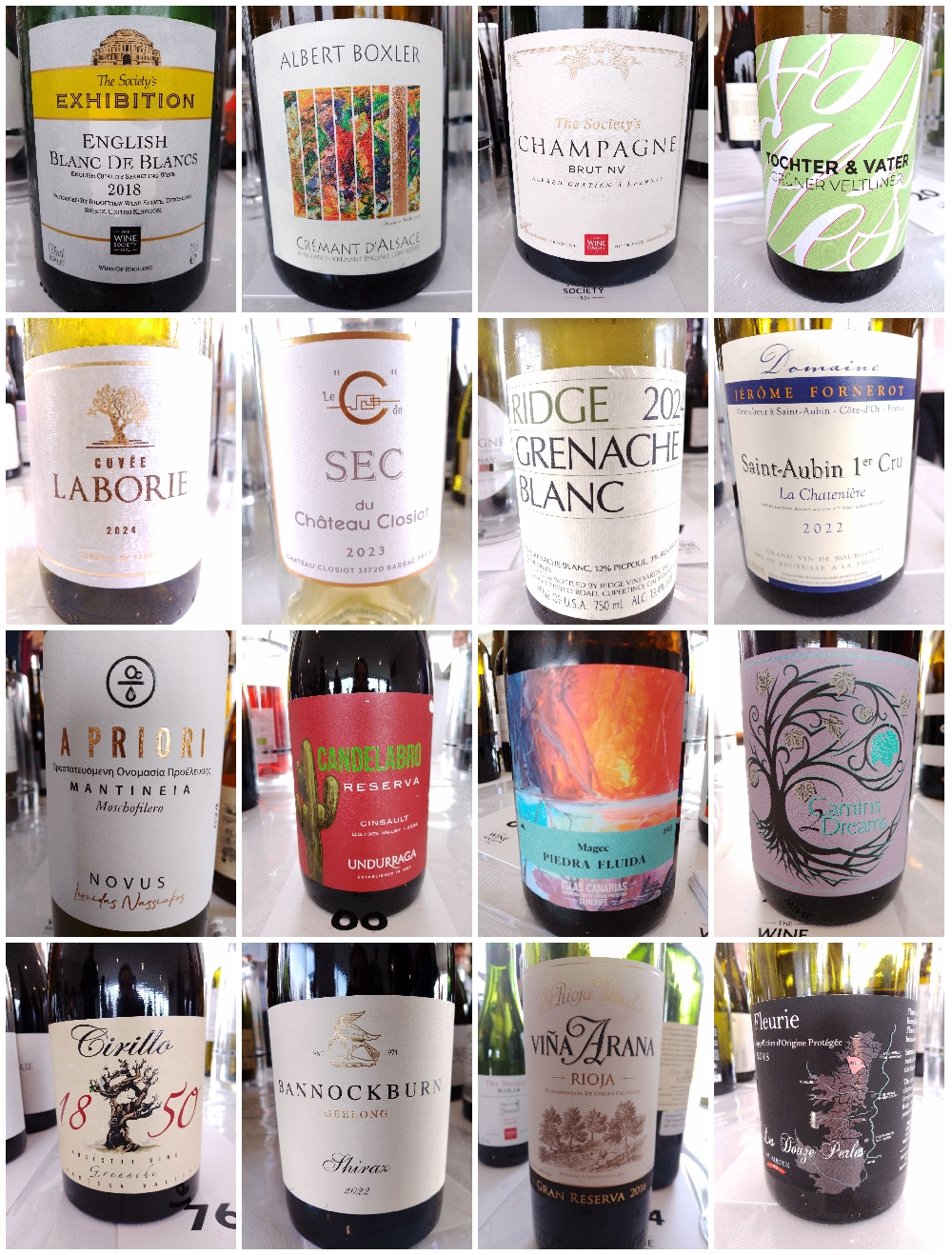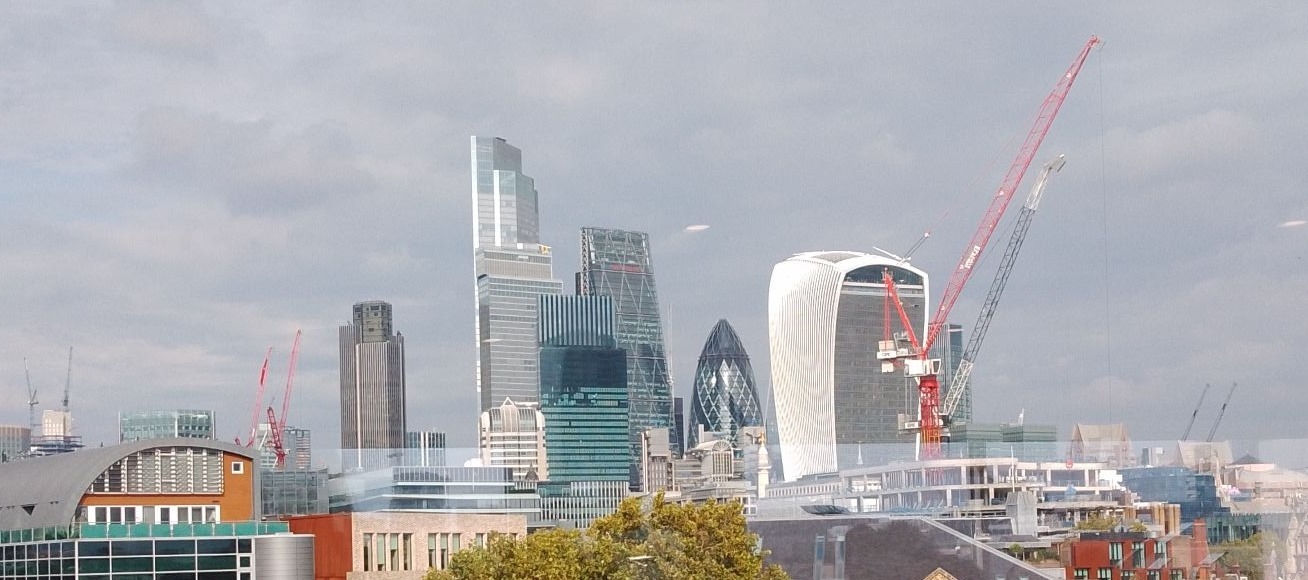
I was pleased to attend The Wine Society Press tasting this time, having missed the previous one due to bereavement. Prior to this, the tastings were held at the private wine members’ club, 67 Pall Mall, which was proving too small.
This time, however, the tasting was held at a new venue with expansive views across London, offering a much more accommodating space. The Wine Society made use of it, increasing the number of wines to 120 from their usual 80 to 100.
More than half the wines on offer were new additions to The Wine Society’s portfolio. Despite challenging market conditions, the Society is performing well, with volumes up 2% and a record 183,000 active members. Rosé sales were up by 24% year-on-year. These achievements come even in the face of rising costs, with overheads increasing by £6 million due to national insurance, duty and extended producer responsibility charges.
Here are my very top picks from the tasting, even though a great many wines also stood out:

The Society’s Exhibition English Blanc de Blancs 2018 12% £28.81
Made by Ridgeview using 100% Chardonnay and the traditional method. Disgorged after six years, so it sat on lees for longer than usual. A clear aroma of brioche, with citrus and peach in the background. Tastes of fine pastry with fresh acidity. Slightly sweet, as it is a brut.
Domaine Boxler Crémant d’Alsace 2020 12.5% £25.00
Made from Auxerrois, Pinot Blanc and Pinot Noir grapes, with eight months of lees ageing. A lovely aroma of brioche and apple. Long taste and slightly sweet. Resembles Champagne but with more sweetness and less Champagne-character.
The Society’s Champagne Brut NV Magnum 12.5% £68.63
Produced by Alfred Gratien using Chardonnay, Pinot Noir and Pinot Meunier grapes. Aged for five years on lees. Toast, brioche and nuttiness on the aroma with notes of citrus. Baked apple and citrus come through on the taste, followed by good length on the finish. Lovely balance. Awarded 92 points by Decanter.
Tochter & Vater Grüner Veltliner 2024 12% £12.50
From Austria and made with 100% Grüner Veltliner. An excellent aroma of citrus and apricot. Flavours of peach and ripe melon with a lively, rounded feel and a long finish. Good value.
Cuvée Laborie Blanc 2024 11.5% £7.95
A French white from Gascony made using 100% Sauvignon Gris grapes. A relatively muted aroma, but ripe grapefruit and kiwi come through clearly on the taste. A rounded style. Excellent value.
C de Sec Château Closiot, Barsac 2023 13.5% £14.95
From the Barsac region in Bordeaux, made with 85% Sémillon and 15% Sauvignon Gris. Barrel fermented. Aromas of apple, pear, vanilla and oak with a soft but deep middle taste. Long finish with orange citrus accents. Great character from very ripe Sémillon.
Ridge Grenache Blanc 2024 13.5% £42.00
From the USA, made from Grenache Blanc, Picpoul and Roussanne grapes. Oak, almond and honeysuckle aroma. Creamy stone fruit flavour with a soft, round feel and a touch of salinity. Comes across slightly sweet.
Domaine Jérôme Fornerot Saint-Aubin 1er Cru La Chatenière 2022 13.5% £41.00
100% Chardonnay from Burgundy. A delicate fruit and light oak aroma. Long and smooth with flavours of apricot and oak. A warming and lingering aftertaste with extra depth. For me, one of the best wines of the tasting.
A Priori Mantinea Moschofilero, Novus 2024 12.5% £13.95
Greek wine made by a Polish winemaker using 100% Moschofilero. Sharp citrus and kiwi on the aroma and taste, with a touch of saltiness. Very fresh and bright with a pure profile. Reminiscent of just the kiwi note in New Zealand Sauvignon Blanc. Different and great value.
Undurraga Candelabro Itata Reserva Cinsault 2024 13.5% £8.95
From Chile, made from 100% Cinsault grapes. Very aromatic and floral. Ripe raspberry fruit with a slight touch of tannin. Excellent value.
Piedra Fluida Majec 2023 13% £14.95
New from Tenerife, made from limited crop following recent wildfires. Uses Listán Negro and Listán Blanco grapes. Light in colour with a slight brown hue. Smoky oak and fruit aroma. Deep fruit on the taste but with lightness up front and medium tannins on the finish. Excellent value.
Camins 2 Dreams Yila Red 2023 13% £22.00
From the USA, made with a complex blend including Carignan, Syrah, Grenache, Gamay, Graciano, Grüner Veltliner and Albariño – “Yilá” means “all-everything” in the winemaker’s native Chumash (Samala) language. Low-intervention winemaking with natural yeast. Balsamic and raspberry on the aroma. Tangy and savoury with deep fruit. Not filtered, so cloudy. Unusual.
Cirillo 1850 Ancestor Vine Barossa Valley Grenache 2018 14% £44.00
From South Australia, made using 100% Grenache. Aromas of liquorice and dark fruit. Flavours of deep blackcurrant and spice with medium tannins.
Bannockburn Geelong Shiraz 2022 13.5% £24.00
From Victoria, Australia. Slightly brown in colour with an intense woody aroma. Very savoury but still shows lots of fruit. Light tannins and lots of complexity. A highly aromatic and distinctive wine.
La Rioja Alta Viña Arana Gran Reserva 2016 14.5% £36.00
Made with 95% Tempranillo and 5% Graciano. Complex and expressive aroma of balsamic, wood, vanilla and red fruits. A combination of woody, fruity and spicy flavours. Smooth tannins and a long finish. Very highly rated by all the top critics.
Fleurie, Les Douzes Perles Vieilles Vignes 2018 13.5% £14.95
New, made from 100% Gamay grown on 70-year-old vines. Strong violet notes and gentle oak aroma. Deep red berry flavour with more body than a typical Fleurie, almost medium in weight. Light tannins. One of the finest Fleurie wines I have tasted. For me, the best quality-to-price wine of the tasting.
This tasting felt unlike most others. At supermarket events or importer-led tastings, wines within a category, whether red, white, or sparkling, often fall into recognisable patterns. They tend to reflect the styles that buyers or companies believe will succeed commercially, which can result in wines that, while different, come across with a certain sameness. An analogy might be similar tones of different colours. Variations exist, but the overall tone is familiar.
The Wine Society’s approach could not have been more different. Moving from one wine to the next brought striking contrasts, demanding real concentration to remain focused. At most tastings, I usually find myself drawn to the few wines that stand apart from the prevailing ‘house’ style and have their own character. Here, that was not the case at all. The sheer diversity made it impossible to settle into any common theme. It was clear that even seasoned writers, normally steady in their behaviour, were caught up in the energy of it. I overheard one mutter: “How am I going to cover all this?”
The new and attractive venue, the generous number of wines and even the thoughtful addition of a goodie bag on exit reflected a meticulous attention to detail, well matched by the quality and character of the wines themselves.
Please note that at the time of writing, not all wines are in stock yet
and prices are subject to change.

View from the tasting













